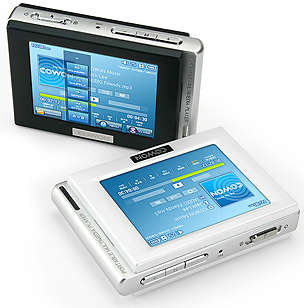Neuros put out a press release yesterday saying that
“Neuros and Texas Instruments create new bounty program for next-gen Open Internet Television Platform“, and Joe Born of Neuros said on their mailing list that “it will be a complete open platform that will allow developers of all levels to contribute and port applications.”. You can also read some additional thoughts and ideas in the ARS Technica article called “TI and Neuros team up to build open source media platform“. It is basically a hardware platform based on TI’s TMS320DM644x DSP system-on-a-chip line, also called DaVinci. There’s no coincidence of course that the Neuros OSD 2.0 will feature that.
Personally, I’m not convinced when I see TI speak of Open Source since I’m fully aware of their history and I even believe that this brand new “open” platform still requires TI’s restricted-but-free compiler for the DSP. Of course it is more open than many other platforms, but I dislike when someone tries to sound all fine and dandy while at the same time they’re trying to hide some of their better cards behind their back.
A truly open platform would not give TI an advantage. It would offer anyone wanting to do anything with it the same chance. This platform does not. After all, having it built around one of SoC flagships should be enough for them and should be a motivator for them to make this as successful (and thus as open) as possible.
I think it is sad that Neuros repeatedly does this kind of statements. Their original “open source” player was never open source (to any degree). Their OSD player is largely open source but huge chunks of it is not. Now they try to announce even more openness for an entire platform and yet again they fail to actually deliver a truly open product. Neuros shall forever be known as the company who seems to want to do right, but always fails to in the end nonetheless.
Update: Joe replied on the list to my question about the DSP tool(s) and it certainly sounds as if TI may in fact release a more open tool and/or even a gcc port!? If that turns out true it will of course squash most of my complaints here!



